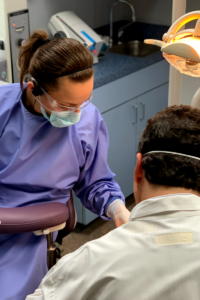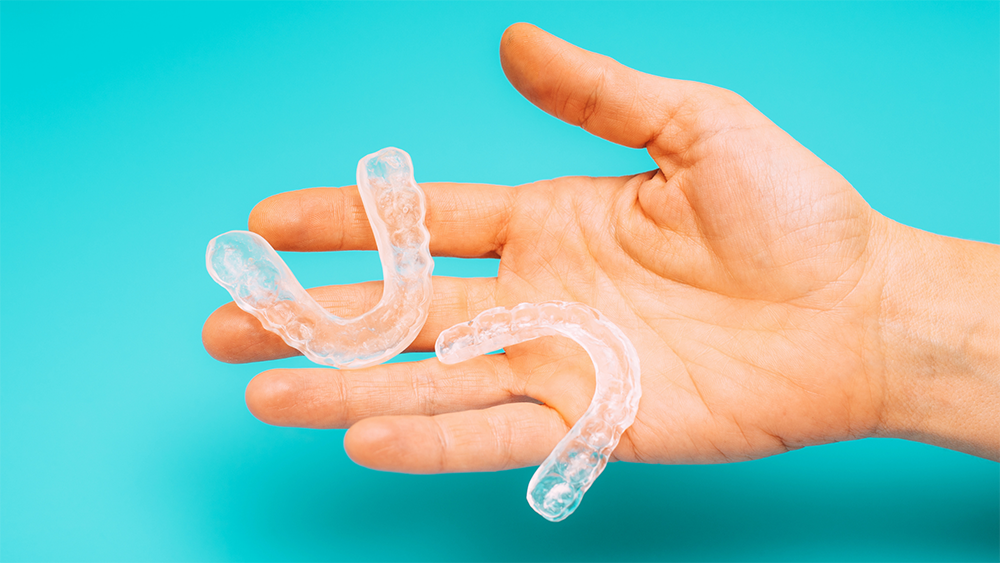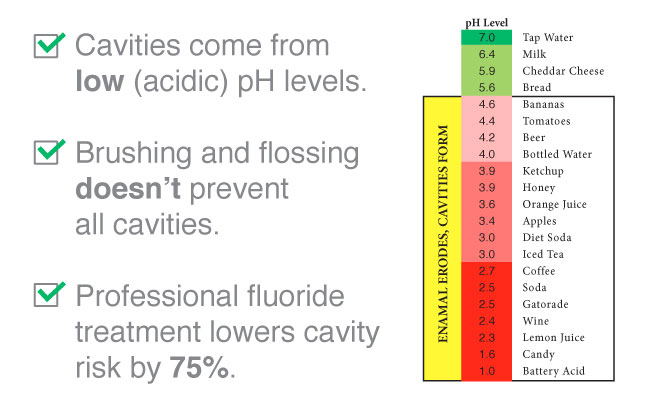WHY CHOOSE INTRAVENOUS SEDATION?
People choose Intravenous Sedation (IV) for a few reasons. Sometimes, a person’s anxiety about an upcoming dental procedure is fairly high (think of it being a 9 or 10, on a 1-10 subjective scale of anxiety). At this level of tension, Dr.Yaremko’s experience is that only intravenous sedation or general anesthesia (being put fully to sleep) will keep people comfortable during their appointment.
IV Sedation usually works to help the following setbacks:
- to control a strong gag response
- for people that aren’t sure what their anxiety levels are
- for those who are more likely to have panic attacks at the dentist
IV Sedation is often more helpful to people in these circumstances because stronger doses of medications can be given. This can be done in a way so that both the sedation can be timed to wear off by the time the appointment is done.
WHAT IS IV SEDATION?
In our office, Intravenous Sedation consists of Dr. Yaremko starting an IV line. He then ads medication into the IV line which will perform a few functions:
- Medications such as Midazolam are added to help reduce anxiety and also help make the procedure seem shorter and reduce the memory of the procedure.
- Sometimes, narcotic meds are used to help provide pain and discomfort control. These meds interact with the Midazolam to increase relaxation.
- Anti-nauseants are used, such as Dexamethasone, Ondansetron, and Benadryl so that meds such as narcotics don’t make people queasy.
- Anti inflammatory medications, such as Toradol are often given and used for post-op discomfort management.
SAFETY PRECAUTIONS
Patients are monitored during the procedure using EKG, Electronic blood pressure, pulse oximetry, heart rate and Exhaled carbon dioxide.

Dr. Yaremko also listens for breathing throughout the procedure with a Bluetooth stethoscope.
Once the appointment is complete, patients are discharged to a responsible adult who escorts them home, and are not allowed to operate heavy machinery (including driving cars) on the day of sedation.
We welcome new patients that have a hard time going to the dentist and feel that sedation will help them get through the dental procedures so that they can have a healthy mouth.
We undertake projects, both big and small to accomplish this, and we have decades of experience to offer you! Please call 360-734-6620 or email [email protected] for more information and/or scheduling. You may also complete our Contact Us form on this page.
Nocturnal Bruxism
/in General Dentistry/by Dr. YaremkoDid you know that roughly 8% of American adults grind their teeth at night in their sleep? In this blog, we will break down the symptoms, and treatment options available for Nocturnal Bruxism.
SYMPTOMS
Symptoms indicating this are having sleep-partners tell you that you grind your teeth, and/or you may wake up with sore teeth, or sore jaw muscles. Often, people will notice more nighttime activity during periods of increased stress.
This will often lead to patterns of wear on the teeth where the teeth can wear down rapidly. This is often linked to TMD which stands for temporal mandibular dysfunction. This is often miss reported as TMJ, which stands for temporal mandibular joint which is an anatomical term. TMD is soreness in the muscles of the jaw and face (which move the jaw).
Left unmanaged, nocturnal bruxism can lead to a number of different issues. It can lead to pain in the muscles used to chew (side of face and temples). Sometimes, other more odd symptoms can occur such as tinnitus (ringing in the ears). If left unchecked, we’ve seen severe enough wear from Nocturnal Bruxism that is has led to a need for full mouth dental reconstruction with a mouth full of crowns.
TREATMENT
There are some medications, such as L-dopa that are implicated in initiation of teeth grinding, but we don’t seem to have any drugs that stop the grinding itself at this point in time.
Treatment mostly consists of protection of the teeth and discomfort management. We construct and professionally adjust hard acrylic night guards. They snap on to the upper arch of teeth and are fully adjusted to meet the lower teeth. These are smooth to allow sliding of the lower teeth against it.
If you are dealing with NB and are looking for more information or assistance, call and schedule an appointment today with Eric Yaremko Dentistry by calling (360) 734-6620. We encourage you to follow us on social media @ericyaremkodmd on Instagram and Facebook for more useful dental information. See you there!

Bite Problems
/in Dental Health/by Dr. YaremkoOne of the issues we see in our practice is abnormally worn teeth. Sometimes patients are aware of this problem, and sometimes the change has taken place over such a long period of time that they aren’t aware of the issue until it’s brought to their attention. The normal amount of wear on teeth (according to occlusion experts/bite related experts) is 1mm over the course of 100 years. When you’re losing tooth structure faster than that, that’s pathologic (meaning that you have a high potential of having occlusal disease). Also, there shouldn’t be chronic pain in the muscles around the jaw.
Bite-related issues can be one of the most challenging things we deal with in our practice. We sometimes see patients who come in where they have worn their teeth down to half, or come in with teeth where the tongue-side are hollowed out and the teeth are now extremely thin. When patients wait several years to be seen, this allows several years worth of damage to have the time to add up. This can lead to a need for fairly extensive reconstructive dentistry. These are some of the more complicated items that our practice helps patients with.
 SCREENING INDICATIONS THAT YOU HAVE A BITE PROBLEM:
SCREENING INDICATIONS THAT YOU HAVE A BITE PROBLEM:
● Do your jaw muscles get sore or tired from chewing hard (protein bars) or chewy (gum) foods?
● Are your teeth wearing down or are your front teeth getting shorter/thinner?
● Are the front teeth feeling like they hit more prominently when you bite?
● Do you feel like you have to squeeze to get your back teeth to touch?
● Do you have to search for your bite
○ When you close your lower jaw to your upper teeth, do you know where they will meet? – Is it different each time?
○ Is it even on both sides
○ Do you have to search for your bite?
○ Do you have more than one bite?
● Are your teeth loose or wiggly?
● Do you have a nervous habit of biting items that shouldn’t be bitten? your nails? Pens or pencils? Ice?
● Do you grind your teeth at night?
If you feel that you relate to any of the above, feel free to call us at 360-734-6620 as we are accepting new patients, and would be happy to schedule an appointment with you.
Nervous When Visiting The Dentist? Here Are Some Tips To Help You Stay Calm!
/in General Dentistry/by Dr. YaremkoGoing to the dentist is very important for your dental hygiene, but some dental-goers have extreme anxiety when it comes to following through with their appointments. Even though it may not be the most comfortable appointment to commit to, it’s an extremely important one.
We understand what it’s like to be uneasy about routine check-ups, or even in-depth procedures. That’s why we compiled this list of anxiety-reducing tips to help you stay calm on your way and during your dental visit!
 Sedation & Anxiety Control
Sedation & Anxiety Control
Sedation dentistry is the perfect choice for those who experience a little, to an overwhelming amount of dental anxiety. With a range of options, you’ll be completely relaxed and comfortable throughout your next dental appointment.
First, we listen to your concerns. We then discuss different methods for making you as comfortable as possible. Together, we lay out a treatment plan that will meet your needs. We have several options for getting your mouth fixed and being relaxed while we do it.
A list of methods that we use to ease your anxiety are as follows: Comfortable Injection Techniques,
Local Anesthetic for Pain Free Care, Bellingham Dental Fear Counseling, Distraction Techniques. Nitrous Oxide (Laughing Gas), Oral (Pill) Sedation, Intravenous Sedation, General Anesthesia in Office and Post-Treatment Comfort.
Read more on our Sedation & Anxiety control tactics on our website by going to our Services page, and then clicking on Anxiety Control, or by reading this blog post.
Meditation
When you’re not in the right mental state, meditation is a great way to help you to refocus and recenter yourself before moving on. There are different types of meditation that can have different impacts such as guided meditations, yoga, deep breathing exercises and even body scans to help you get in the right state of mind.
You can run yourself through these different types of meditation, or find videos on meditation through apps or online.
Music
Another nice tip to help you relax both physically and mentally is to ask your dentist if it’s okay to wear headphones or earbuds while going through your appointment. Listening to music is a great way to keep your mind busy, and can aid as a nice distraction.
Alternatively, downloading a book-on-tape or listening to your favorite podcast can serve as something to focus on instead of the procedure itself.
Also we have a list of CDs and videos that you are welcome to listen to/watch through our wireless headphones and overhead screens.
Open Up
Informing your dentist about your hesitations is always a great idea. By letting your dentist know how you’re feeling and what’s going on, they’re able to be more mindful of your concerns during your appointment as mindfulness can take many forms.
If needed, your dentist can slow down their movements, let you see and explain each tool before using them or answering any questions that you may have.
Communication
In addition to communicating, you and your dental team can come up with hand signals to let them know when you’re too uncomfortable to proceed, implying that you need to take a break. This is especially important because your dentist doesn’t want to make you uncomfortable, they want to clean your teeth and benefit your dental hygiene and are willing to do anything to accommodate you, as the patient, in order to make sure you are comfortable.
Here at Eric Yaremko Dentistry, we specialize in Anxiety-Managed Dentistry. Our main goal is for you to have a comfortable experience before, during and after your dental visit. Visit our website, or give us a call if you have any questions regarding anxiety and how it may impact your dental visits.
No Nonsense letter
/in General Dentistry/by Dr. YaremkoWhy my dental practice is the way it is:
My slogan at the practice is Dentistry with Care. That is designed to reflect how I want my office to help people. The most significant thing that I can give patients is my time and CARE. I want their experience to be better than the experiences that I had when I was young. This quest for me has been for over 30 years now to try to give patients that come to see us the kind of experience at the dentist that I would like to have myself.
I was in pain with the way my dentist gave injections, and they weren’t effective at making my lower teeth numb. So, I give injections slowly and carefully and encourage my patients to give me feedback if they’re uncomfortable. I also took classes and learned additional nerve block techniques and have purchased special syringes to work at getting even the most stubborn teeth numb. It takes time and is more costly to do, but it is how I would want to be treated, so it is what we do.
I was hurt when my dentist tried to work on me. When they tried to drill on me I would get jolts of absolutely intolerable pain. It was obvious to me that he didn’t really care about the pain, didn’t know how to fix it and that I was being annoying to him and the staff, as I was having a problem keeping still and ruining their schedule. This happened to me about six times or so and ended up leaving me with a lot of residual anxiety about going to the dentist. In creating my dental practice I wanted to create a place where patients like me can go to have the kind of treatment that I would want myself. So I spent a fair amount of time and investing money into creating a place where my office can manage patients like myself. I hope that this comes through if you decide to use us to take care of you. First, I have private rooms and walls at the office for a reason. If I’m anxious about an injection or procedure I really don’t want somebody else witnessing that thank you, so you won’t either—we have walls. I never liked just sitting in that chair and counting the ceiling tiles while listening to the drill, that I came to fear. So, I bought headphones and televisions on expanding arms so that there is noise blockade and you have something else to do than sit there and focus on us. The distraction helps.
I still have the memory of the old painful experiences ingrained in my mind. Enough so that going to the dentist for me is still extremely nerve racking. I can’t seem to get over that feeling that something awful is about to happen at any second. When I have dental procedures done I have sedation done to minimize the anxiety about the procedure. So to take care of patients like me, I have trained for years in sedation and have invested a lot of time and money into equipment to provide nitrous oxide, oral sedation and Intravenous sedation (only 4% of general dentists provide this service). Also, I sometimes bring an anesthesiologist into the office and have them provide a similar service to going to sleep for an operation in the hospital. The goal is that no matter how tense our patients are about a procedure we can tailor a method for them, be it minor or strong, to manage that tension about having the procedure done. That feeling of dread can be eliminated. We can handle it, no matter how great it is.
Quality of work performed: My fillings in my teeth didn’t last and I came to find out that the crowns done in that practice, on my parents were not done very well either. They didn’t fit the teeth very well and this led to early failures and a lot of work that needed re-done. What I want when I go to the dentist is the best that can be done as I really don’t want to be there in the first place and I want to be there to have it re-done even less. I do not want assembly line type, mediocre to poor technical quality work, that fails early. That has driven the technical training and substantial investment that I have made in training in comprehensive care. I have taken courses in reconstructive and comprehensive care since the early 90’s. I have trained at the Kois Center and am a Clinical Instructor there as I believe that it offered the most advanced post-doctoral curriculum available. I use Kois Center partner Dental Laboratories, as the fit and esthetics of the work that they produce is far above any that I have ever seen. I have equipment and training to take care of almost all procedures with-in the walls of my office. But more than anything else I take the time to sit down and work at really trying to get it right. All of this is designed to provide the very best of care in all facets of what we do. It takes a lot more time and care and cost but again it is what I want when I go to a dentist.
So this is why our practice is designed the way it is. We are not a “discount practice”, as I know that I am not going to be able to be a comfortable patient in that type of dental facility where they don’t have time for personal attention and attention to technical excellence. I would be a comfortable patient in my practice and that has been our driving force since 1990.
Cavities: Myths and Hopes
/in Dental Health, Dental Hygiene, General Dentistry, Implant Dentistry/by Dr. YaremkoThe Caries Infection
Cavities are holes or soft spots that form in teeth as a result of the caries disease. Caries is an infection with the type of bacteria that can cause these holes in teeth. An infection is 1) an abnormal amount of bacteria, 2) bacteria that are living in an abnormal place, or 3) both. The caries disease is an abnormal amount of the type of mouth bacteria that like to make and live in acid. It is located in the thin biofilm on your teeth. Most types of bacteria living in the mouth are not acid loving and do not contribute to making cavities.
Contracting caries most often results from a variety of things happening simultaneously. First, you need to get the kind of germs that cause cavities (cariogenic) introduced into your mouth. They are often transmitted through common interactions like kissing and the sharing of foods and utensils. Then, conditions have to be right for those bacteria to settle and replace some of the non-cavity causing bacteria living in the biofilm on your teeth. Those conditions are made more favorable for the caries-type bacteria by having a diet that is high in the frequency of acidic foods. Also, a diet that frequently consists of sugar-containing foods allows the biofilm bacteria to make acid for about 30 minutes after each and every sugar exposure. These things create a favorable environment that allows the caries bacteria to multiply to a harmful level and become the infection.
Acquiring Cavities
Acquiring cavities, or holes in teeth, from this infection depends on several things. The first is saliva. Saliva protects teeth by washing away and diluting the acids, while simultaneously buffering teeth from the damage acids cause. People with dry-mouth problems caused by diseases or medications are especially prone to getting cavities, as they lack this protection. The next factor is the hardness of the tooth structure itself. Genetics play a role in this. Harder teeth are more resistant to acid attack. Tooth hardness can be changed with fluoride; it makes teeth harder, so acids can’t as easily dissolve them and make holes in them. Diet is a huge component! Sugar and acid attack the tooth structure every time they are in the mouth. The caries bacteria will make acid for about 30 minutes after each exposure to any sugar. Acid softens the teeth and eventually creates the hole or cavity. Lastly, having a lot of bacteria or a heavy amount of plaque on your teeth allows a greater number of bacteria to make more acid. When the layer of caries bacteria becomes very thick, more acid is produced. Getting cavities depends not only on having an abnormal amount of cariogenic bacteria but also on lower resistance to the bacteria’s harmful effects in the above categories. Some of these factors can be controlled by the patient, and some (like inherited tooth hardness) cannot.
Myths about cavities:
Myth #1
Brushing and flossing prevent cavities.
Brushing and flossing help minimize excess amounts of bacteria, but cavity-causing types of biofilm bacteria that live right against the tooth still remain after brushing and flossing in enough numbers to cause cavities.
Myth #2
Rinsing or brushing after eating sugar will prevent cavities.
The biofilm cavity-causing bacteria make acid for about 30 minutes after each sugar exposure. Rinsing and brushing don’t shorten this event.
Myth #3
Fluoride prevents cavities.
The tooth structure can be made more resistant to acid dissolution, but tooth enamel can’t be turned into to armor — the tooth can still dissolve with enough acid attacks.
Myth #4
Removing the decay from your teeth and placing dental restorations get rid of caries.
Removing the decay and placing dental restorations will fix the hole (the cavity), but it does not address the abnormally high level of acid-producing bacteria in the biofilm on all of the teeth. The caries infection in the biofilm remains. This is why patients often get cavities even after having dental work done.
Cavity-Prevention Tips
Though none of the tips below provide a cure for dental caries, when practiced together they make preventing the disease a real possibility.
- Minimize the frequency of sugar and acid-containing foods in your diet.
- Brush and floss to prevent excess bacteria from making extra acid on your teeth.
- Rinse with a base-containing mouthwash (Cari-Free® treatment rinse followed by maintenance rinse) to expose the acidic biofilm bacteria to an acid-neutralizing base. This creates an environment that acid-producing bacteria don’t like.
- Use prescription-strength fluoride toothpaste and rinses (such as Cari-Free toothpaste and maintenance rinse). This hardens the outer layer of the tooth and makes it harder to dissolve or decay.
- Use high-concentration xylitol products (Cari-Free gum and/or lollipops). Xylitol is a sugar alcohol that hinders the harmful bacteria’s ability to make acid from sugar.
- Get your cavities fixed so the holes don’t act as caries bacteria reservoirs.
- Encourage friends and family to do the same in an effort minimize cross-infecting one another.
- If you have a salivary flow problem, use xylitol moistening sprays (Cari-Free CTx2 spray). Avoid eating hard candies containing sugar, as the combination of sugar and dry mouth is destructive to healthy teeth. Ask us if you may be a candidate for pilocarpine medication to increase salivary flow.
- Get dental checkups on a regular basis. If you’re getting cavities, you don’t want the situation to worsen.
These things all work together, and the more of them you do, the fewer problems you’re likely to have. Our office stocks a number of Cari-Free products, like the CTx4 Toothpaste, CTx3 Rinse and the CTx4 Treatment Rinse. If we’re out of stock, or if you see something on their website (CariFree.com) that we don’t normally carry, let us know and we’ll get it ordered for you. Quite simply, they are the best we’ve found so far.
We are working on implementing a new diagnostic protocol in the office to try to help patients monitor their cavity risk and prevention progress.
Do Whitening Toothpastes Really Work?
/in Dental Hygiene/by Dr. YaremkoThe effectiveness of whitening toothpastes on your teeth will depend on why they don’t look white in the first place.
Whitening toothpastes chemically or mechanically help to remove stain on the tooth surface. There is no evidence that they can whiten teeth from internal discoloration. The only whitening agents in toothpastes are abrasives that help rub off stains from coffee, tea, or red wine, for example.
If you believe your teeth are not as white as they should be, Eric Yaremko DMD, PS can advise you on which whitening method would work best for you. Because most toothpastes contain mild abrasives, they may not be strong enough to remove heavy external stains that need to be scaled and polishes off professionally at our office.
Do You Know How Food Affects Your Teeth?
/in Dental Health, General Dentistry/by Dr. YaremkoWe all know it’s good to brush your teeth at least twice a day. It’s even better to brush after eating, but unfortunately most of us don’t have the time for that.
Cavities form as a result of tooth decay. Tooth decay is caused by the acidity in foods. Acidity levels, also known as pH levels vary by the type of food and drink.
Take a look at the pH Level chart below to see if what you are eating or drinking is increasing your risk for cavities.

If it’s been over six months since you have seen Dr. Yaremko, make sure to book your appointment with Eric Yaremko DMD, PS. in Bellingham, WA to ensure that your teeth stay healthy. Your hygienist at our office can also provide you with other ways to prevent tooth decay.
Strawberry Kiwi Smoothie – A Recipe For Strong, Healthy Teeth
/in Dental Health/by Dr. YaremkoKeep your smile bright and your teeth healthy! Just like your bones, your teeth stay strong when you consume enough calcium and vitamin D. Milk, Strawberries and broccoli are all foods that can help prevent trips to the dentist. Enjoy this Strawberry-Kiwi Smoothie to get some cavity-fighting nutrients.
Refreshing and easy to make, one serving provides almost twice the amount of vitamin C you need for an entire day! Consume tooth-strengthening calcium and vitamin D from the milk in this strawberry smoothie.
During your next appointment at Eric Yaremko, DMD, PS make sure to ask your hygienist for other tips for keeping your smile bright.
Prep Time: 10 mins
Servings: 2
Ingredients
- 1 1/2 cups fat-free milk
- 1 cup strawberries, hulled and quartered
- 2 kiwi, peeled and quartered (about 1/2 cup)
- 2 tablespoon mint, fresh, chopped, plus two sprigs for garnish (optional)
- 1 tablespoon sugar, granulated, or sugar substitute
- 1 cup ice cubes, crushed
Preparation
Combine the milk, strawberries, kiwis, chopped mint, sugar or sugar substitute, and ice in a blender or food processor. Blend until desired consistency. Garnish with fresh mint and serve.
Nutrition Facts
Amount per Serving
Calories: 155
Total Fat: 0 g
Cholesterol: 0 mg
Sodium: 81 mg
Total Carbohydrate: 32 g
Dietary Fiber: 4 g
Protein: 8 g
Source: JoyBauer.com
Eric Yaremko, DMD, PS
Office Hours
Monday - Thursday: 8AM – 5PM
Friday: By Appointment
